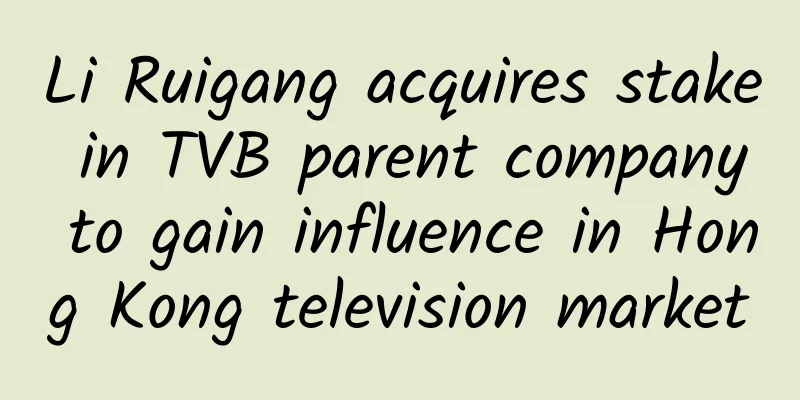Where will OPPO go if its differentiated advantage is no longer there?

|
Among domestic mobile phone manufacturers, OPPO is not a giant. It has been surviving independently and growing slowly. Since entering the 4G era, operator strategies have changed, the power of Internet channels has increased rapidly, and the market environment has become more complex and changeable. Mobile phone manufacturers have transformed and looked for new models. Therefore, the OPPO model has been put in the spotlight and disassembled and analyzed. 1. OPPO is successful, as shown by its good growth and leading profitability. OPPO's success stems from its differentiation by leveraging its strengths and avoiding its weaknesses in terms of brand, design, price and channels. We judge the growth potential of mobile phone manufacturers by the change of market share. Xiaomi's market share has changed the most, which is obvious to all, so I won't discuss it here. Since 2013, the growth rate of the domestic mobile phone market has slowed down. Against this backdrop, OPPO's market share has continued to rise, which is quite prominent. According to data released by Analysys International, from Q1 2013 to Q2 2014, among traditional mobile phone manufacturers, the market share of China Cool Alliance has declined or shown a downward trend, while OPPO has been on an upward trend and has surpassed ZTE. In the 4G mobile phone market, OPPO also performed well, with its market share being on par with Coolpad. The survey found that in China Mobile's 4G market, OPPO's sales share ranked first twice in July and August, and China Mobile's 4G market accounted for more than 90% of the overall market. It is an open secret that OPPO leads the profitability of domestic mobile phone manufacturers. Except for Lenovo and Coolpad, most domestic mobile phone manufacturers are not listed. It is impossible to obtain exact profits from financial statements, but we can understand the profit situation from the estimates of some industry insiders. At the beginning of this year, Wang Yang, research director of iSuppli China, a market research company, revealed on his Weibo: In 2013, the top three in terms of profits were Xiaomi (300 million yuan), OPPO (2.6 billion yuan), and VIVO (2 billion yuan). Lenovo's mobile phone department did not turn from loss to profit until the third quarter of the 2013 fiscal year; Coolpad's profit in 2013 was 280 million yuan. OPPO's success stems from its differentiation strategy. In the 2013 China Smartphone Market Strength Matrix Report released by iResearch International at the beginning of this year, it was described as a "placeholder". OPPO's differentiation is mainly reflected in brand, design, price and channel. For the mobile phone market, the differentiation strategy has been proven to be a shortcut in terms of strategy, but it seems to grow slowly and be full of risks in terms of tactics. In the past, mobile phone giants were not optimistic about it and did not want to do it. This has enabled OPPO to effectively avoid the fierce competition from mobile phone giants and even form a monopoly advantage in some areas. 1. Brand differentiation: OPPO was the first to do brand positioning and conduct large-scale brand promotion. OPPO's target users are young, fashion-conscious, and mostly female. Therefore, OPPO focuses on photography and imaging. In 2011, OPPO hired Song Hye Kyo and Leonardo DiCaprio to shoot commercials, and invested heavily in popular entertainment programs and films, such as Hunan Satellite TV's "Happy Camp" and "Day Day Up", Jiangsu Satellite TV's "If You Are the One", and Dragon TV's "China's Got Talent", etc. OPPO strives to label its user base as "international" and "fashionable". Mobile phone manufacturers such as Huawei and Lenovo did not start to increase their efforts in brand building until 2013. 2. Design differentiation: To be precise, in terms of parameters, OPPO cannot compete with China Cool Alliance. At the same time, OPPO's user base is not very sensitive to parameters. Therefore, when talking about products, OPPO always emphasizes appearance design and user experience. It is said that on the header of the PPT template used by OPPO's head Chen Mingyong, there is a sentence to warn himself: We have never paid attention to user experience and always make products in a direction that is inconvenient for users to use. OPPO outsourced product design to Studio Dumbar, a design company headquartered in the Netherlands, and increased market research on user experience to design products for users. 3. Price differentiation: With the dominance of operators, the domestic mobile phone market presents an M-shaped trend with large ends and a small middle. Apple and Samsung dominate the high-end products above RMB 4,000, while traditional mobile phone manufacturers such as China Cool Union are fighting fiercely in the low-end market below RMB 1,500. In the middle are OPPO, VIVO, Gionee, etc. According to ZDC statistics, in 2013, the average price of ZTE mobile phones was RMB 844, Huawei’s average price was RMB 1,386, Coolpad’s average price was RMB 814, Lenovo’s average price was RMB 851; OPPO’s average price was RMB 2,490. The sales share of the first four in 2013 was in the top 5. The absence of the big sellers in the mid-end market has reduced the development pressure on OPPO. 4. Channel differentiation: China Cool Alliance and others mainly rely on operator channels, Xiaomi and others mainly rely on Internet channels, and OPPO mainly relies on social channels, adopting a manufacturer-channel integration model. Operator channels have the greatest competition, and are also easy to generate sales scale. OPPO only started making mobile phones in 2008, and started late, so it had no access to operator channels. In this case, OPPO played to its strengths and avoided its weaknesses, focusing on social channels that other mobile phone manufacturers were unwilling to do, and increasing channel loyalty by participating in shares, especially in second- and third-tier cities, making OPPO's high profits possible. Second, OPPO began to transform as its differentiated advantage was challenged. In the next year or so, China Cool Alliance will not be able to exert its strength enough, and the threat will mainly be at the strategic level, so OPPO will still be favored. In the long run, OPPO will face all-round competition and will have a lot to learn. When entering the smartphone market in 2011, Chen Mingyong once said: I feel like I have reached a point where I have no idea what will happen tomorrow. With this sense of crisis, OPPO seized the opportunity of smartphones replacing feature phones in 2012. Since entering the 4G era, OPPO has remained resolute in its decision-making and has been quick in its transformation. 1. Transformation background: The mobile phone market environment has undergone tremendous changes First, the growth rate of the domestic mobile phone market has slowed down, and the incremental space is limited, and it has entered the era of full replacement. In the replacement trend, given the leverage of operators' resources and user needs, the 4G concept plays an important role, and manufacturers who seize the 4G trend will achieve phased victory. Second, the terminal subsidy strategy of operators has changed, reducing the subsidy amount, paying more attention to users, and trying to obtain greater value with fewer resources. This has brought about two major changes. First, the operator's channel share has decreased, forcing the operator's cooperative brand manufacturers to increase the expansion of social channels and e-commerce channels. Second, manufacturers with integrated manufacturer channels will be favored and receive a large amount of channel remuneration. Third, traditional social channels will generate new vitality in the short term and gain more attention. Telling, Aesop, D.Phone and others are actively transforming by applying for virtual operator licenses and through B2B, B2C platforms and mobile Internet services. Fourth, the model of free hardware and cross-subsidy through software and services has emerged. In particular, Internet companies entering the mobile phone market often adopt this approach, forming another customized model, reducing user consumption while promoting related businesses. 2. Mobile phone manufacturers are transforming one after another, and OPPO's differentiated advantages are gradually disappearing First, mobile phone product design has shifted from focusing on product configuration itself to focusing on user experience, and paying more attention to user participation. This includes vigorously developing its own ROM and UI, and conducting large-scale or sampled C2B customized research and development through websites or offline. Parameters are still competing, but there is more talk about feelings. Second, the influence of international manufacturers in China has weakened, and domestic mobile phone manufacturers have launched high-quality strategies and increased their layout in price segments. For example, Huawei's flagship products Honor 6, Ascend P7, and Mate 7 are all priced between 2,000 and 4,000 yuan, with the sales target of P7 being 10 million units. Coolpad, Lenovo, and ZTE have successively reduced the number of product models and launched dedicated mid-to-high-end brands. Third, mobile phone giants are making multi-channel layouts, reducing the proportion of operator channels, and expanding social channels and e-commerce channels. Lenovo leverages PC channels, cooperates with operators, and promotes channel sinking. Coolpad imitates the OPPO model, and through equity participation, it forms a community of interests with channels to increase the enthusiasm and proportion of social channel sales. Huawei will build 10,000 sales stores and counters by the end of this year. ZTE's target for social channel sales next year is 50%. Fourth, the model of online promotion and rhythm control and online sales scale is widely used. This model is led by Xiaomi, followed by Huawei Honor, Coolpad Dasheng, Meizu and others, and achieved good results. Fifth, domestic mobile phone manufacturers are going overseas on a large scale to explore new market space. They often start by cooperating with operators and then expand to highlight their own brands. 3. OPPO’s overall layout and shortcomings Product brand and design are valued by various mobile phone manufacturers, social channels are under siege, e-commerce channels have not yet started to grow, overseas market expansion is not obvious, and OPPO's differentiated advantages are gradually lost. My judgment is that China Cool Alliance is in the initial stage of transformation and poses a strategic threat to OPPO, but the real impact is not obvious in the short term. In the long run, the differentiated advantages that OPPO has always relied on for survival will no longer exist. Under siege, OPPO needs to find more incremental markets. OPPO has made a comprehensive layout, but opportunities and challenges coexist: First, quickly transform to 4G, lengthen product line layout, and expand product types. OPPO was quite determined to transform to 4G. At the end of December 2013, it proposed a transformation strategy for 4G: stop developing new 3G products, reduce production, reduce channel inventory, and focus on 4G products for all shipments. Even Coolpad, which wanted to overtake in the 4G curve, did not fully transform to 4G until the second half of 2014. This time, OPPO placed its bet on operators, especially China Mobile. It was this bet that allowed OPPO to temporarily take the lead in the development of 4G. In June this year, OPPO launched the 4G All-Star family, including 7 models and 15 versions, covering the price range of 1,298 yuan to 3,498 yuan. The gradual layout of the entire product line can prevent the risk of poor sales of a single product, but the more products there are, the more difficult it is to manage inventory, which tests OPPO's operational capabilities. OPPO has also begun to explore the field of wearable devices, and has launched the O-Band smart bracelet in cooperation with Baidu. Entering the wearable field is combined with smartphones, trying to combine mobile terminals and wearable devices to become users' life managers and provide practical help for people's daily lives. Second, open up channels and increase cooperation with operators, and entry means incremental growth. When other mobile phone manufacturers were moving away from operators, OPPO began to expand into the operator market. Operators have always been optimistic about the high ARPU value and high activity of OPPO mobile phone users. Since 2013, OPPO's cooperation with operators has gradually become closer. One type of cooperation is to sell products that support the corresponding operator's network standard, commonly known as the "open version", to make money from channel remuneration. This part has brought OPPO hundreds of millions of dollars in revenue. In 2013, the sales volume of TD-standard mobile phones in cooperation with China Mobile exceeded 10 million units, making it the number one mobile phone manufacturer in China Mobile's open version cooperation. After the operator subsidy policy was adjusted in 2014, channel remuneration became the main subsidy method. This strategy is a big benefit for OPPO. Another type of cooperation is product customization. In terms of e-commerce channels, OPPO did not adopt the typical online and offline model. OPPO's channel system has always been closed, with fixed partners and a highly controlled price system, which is also an important cornerstone for it to maintain stable sales. After expanding the operator channel, OPPO products went to the operator's business hall, and the entire channel system gradually became open. To a certain extent, the price of operator channel products will impact the price of social channels, and product price chaos is inevitable. The multi-channel system is the biggest challenge OPPO will face. If it does not take this step, it will become increasingly difficult to move forward under the siege of mobile phone giants; if it takes this step, it will face all-round competition like other mobile phone manufacturers. The difference is that OPPO has little experience in full-channel price control and operation. Third, learn the “three horses”, quickly develop mobile Internet, and explore new profit models. Hardware, software, applications and services are the three pillars of the mobile phone manufacturers' transformation ecosystem. Xiaomi has provided a mature model. I will not mention the hardware aspect. In terms of software, OPPO started to launch a customized ROM similar to MIUI, namely Color OS, in April 2013. It started late and needs to continue to cultivate user habits. In terms of applications and services, OPPO has established a mobile Internet platform "Keke", including software stores, theme stores and game centers, with more than 40 million users. Keke software store ranks among the top eight Android application distribution channels. OPPO has always emphasized that its culture is "duty", not greedy for rapid growth, and not excessive pursuit of profits. In the case of insufficient competition, OPPO has taken a solid path. However, in the face of increasing competition, omni-channel models, marketing innovations, and cooperation with Internet companies will be the directions that OPPO will explore. Perhaps, the next step for OPPO will be to speed up. As a winner of Toutiao's Qingyun Plan and Baijiahao's Bai+ Plan, the 2019 Baidu Digital Author of the Year, the Baijiahao's Most Popular Author in the Technology Field, the 2019 Sogou Technology and Culture Author, and the 2021 Baijiahao Quarterly Influential Creator, he has won many awards, including the 2013 Sohu Best Industry Media Person, the 2015 China New Media Entrepreneurship Competition Beijing Third Place, the 2015 Guangmang Experience Award, the 2015 China New Media Entrepreneurship Competition Finals Third Place, and the 2018 Baidu Dynamic Annual Powerful Celebrity. |
<<: "Naruto" ends: Is the domestic Naruto industry chain also over?
>>: Three unfavorable factors: Where is Samsung's chance to redeem itself?
Recommend
Technology Fun: Top 10 Weird Technology Solutions of 2014
[51CTO Translation] Cyber telepathy, cooking AI...
“Health from Eating” Series | National Fitness Day: How can people who exercise eat scientifically?
...
Why are high-defense servers so expensive?
Why are high-defense servers so expensive? The In...
Is it true that “not eating after noon” can help you lose weight?
Audit expert: Shen Yingjian Director of the Nutri...
Why is Mount Everest growing? | Technology Weekly
Compiled by Zhou Shuyi and Wang Xiang If global w...
The information flow conversion rate increased by 174% year-on-year. How was it achieved?
The cost remained at 180 a few days ago, why did ...
No money will be deducted from the App Store purchases? That's wishful thinking, it just doesn't show up in real time
On November 21, the three-day Apple 1 yuan promot...
If centipede poison is used to poison centipedes, will the centipede be killed by the poison? | Expo Daily
Your best "insider" in the scientific c...
Association for the Advancement of Artificial Intelligence: The Future of AI Research
The Association for the Advancement of Artificial...
Methods and techniques to build a brand without spending money
Everyone must like the idea of building a brand...
E-commerce cash back marketing campaign design!
"Are you there? Please help me!" We mus...
Zhang Shanling's Three Major Axes at Alibaba (21 Lectures) [Completed]
Zhang Shanling's 21 Lectures on Alibaba's...
China Automotive Power Battery Industry Innovation Alliance: Ranking of domestic power battery manufacturers in January 2022
Recently, the China Automotive Power Battery Indu...
Is it expensive to produce the Xuchang photography mini program? Xuchang photography applet production cost and process
WeChat Mini Program is an application that users ...









